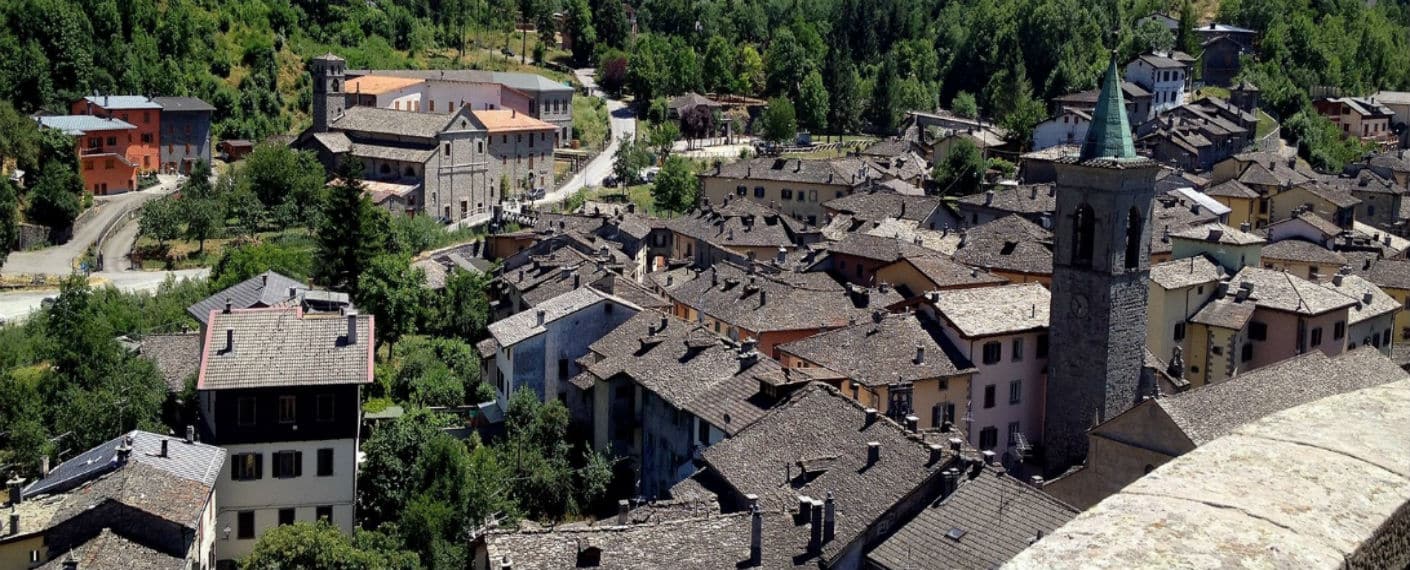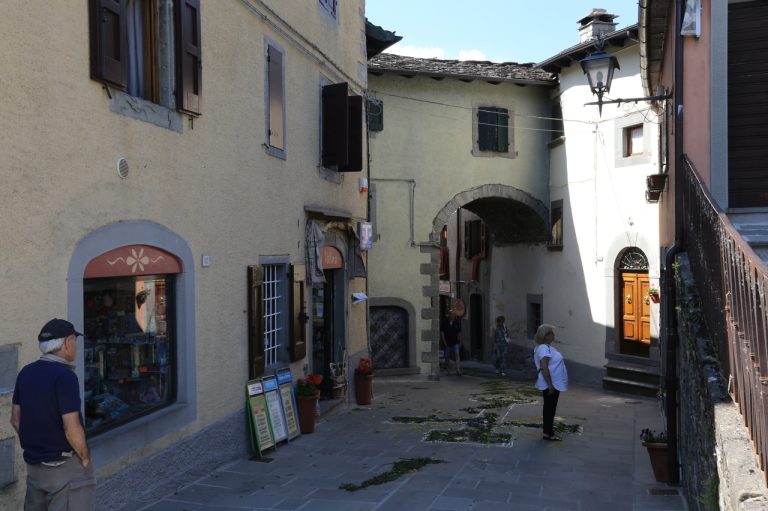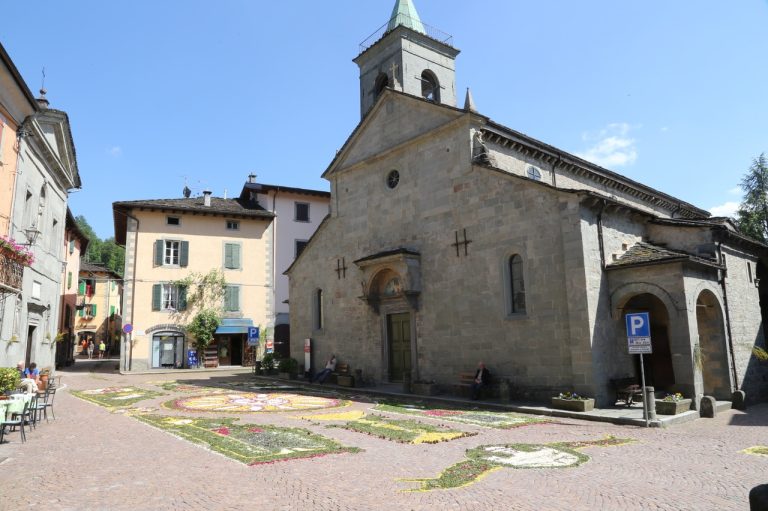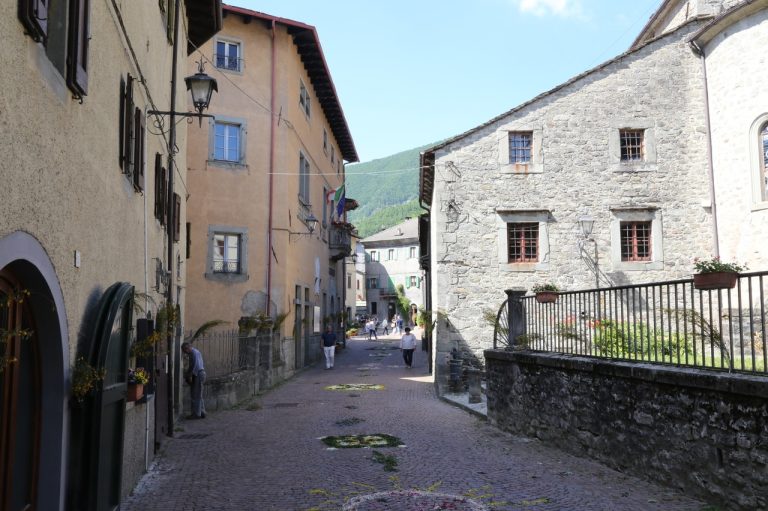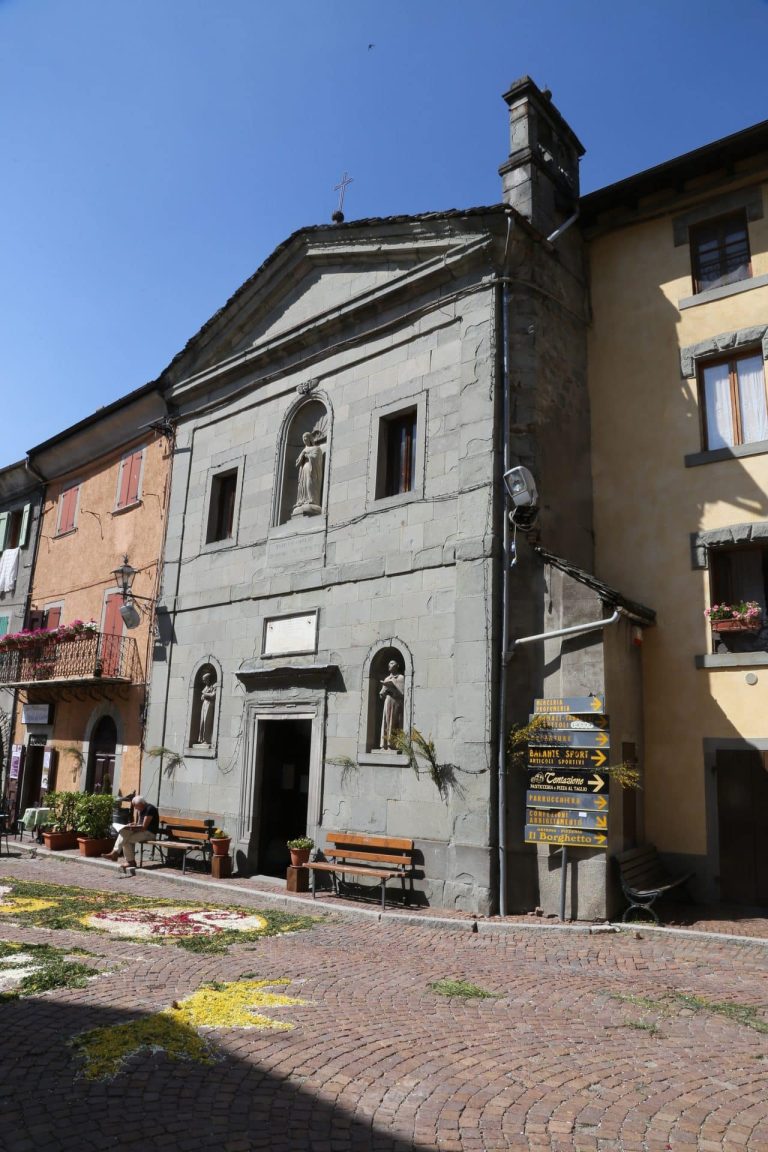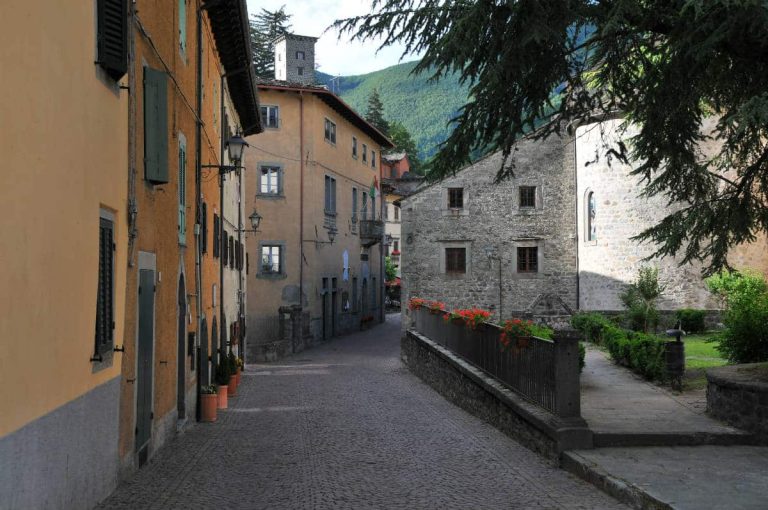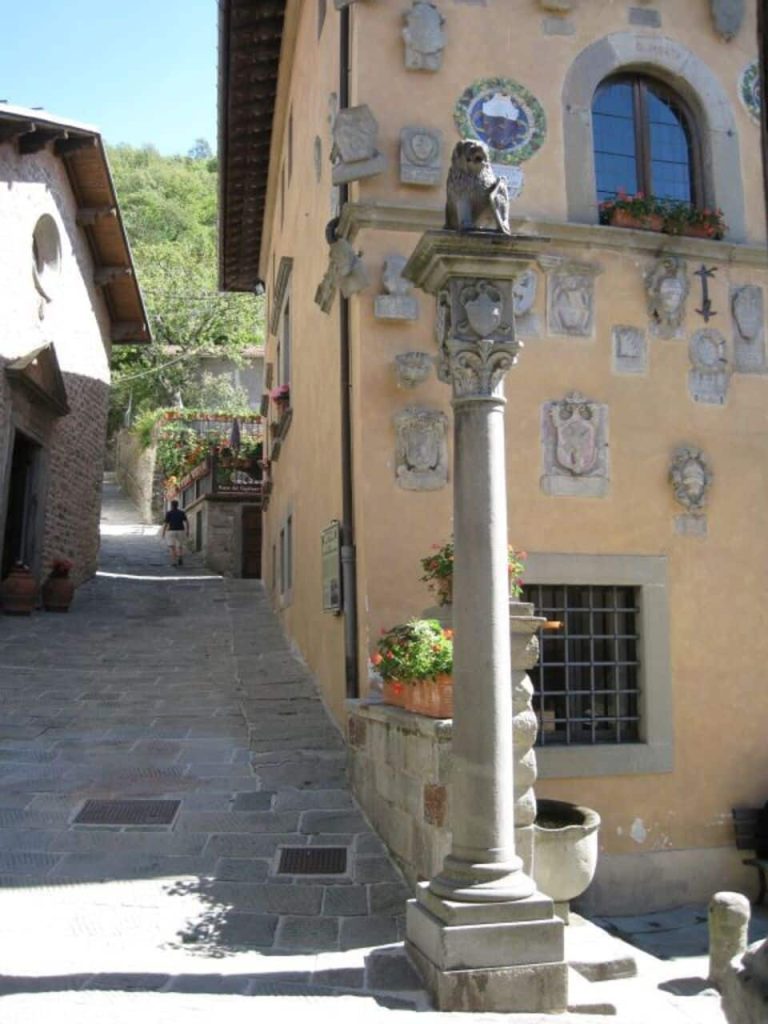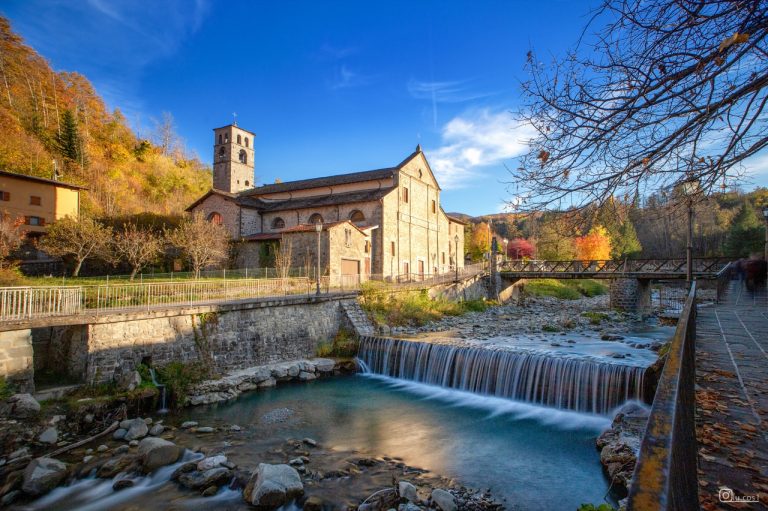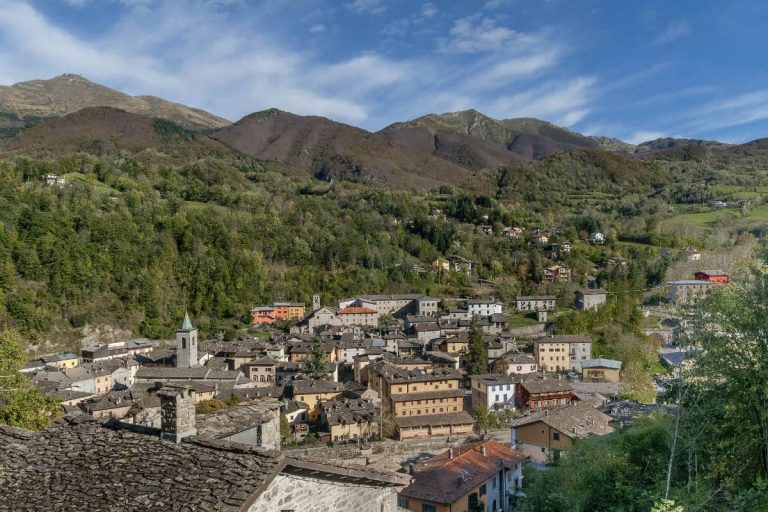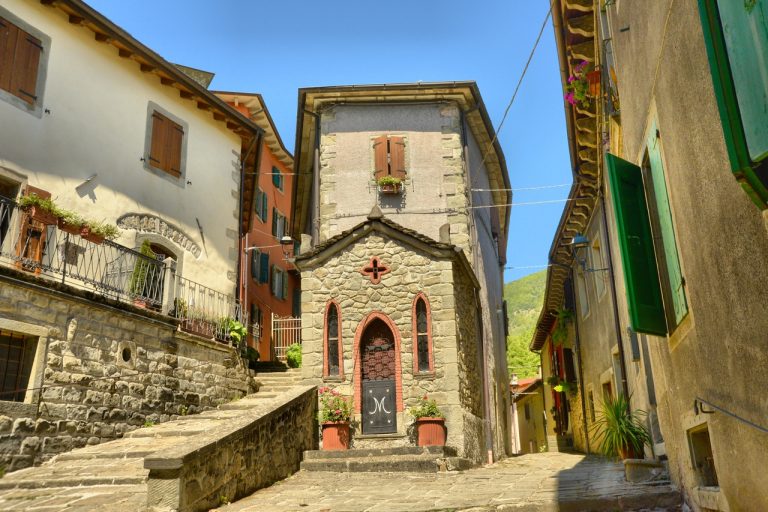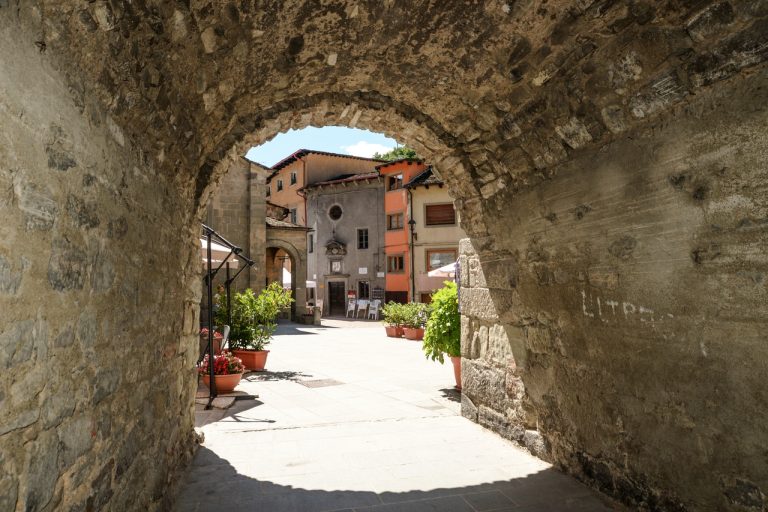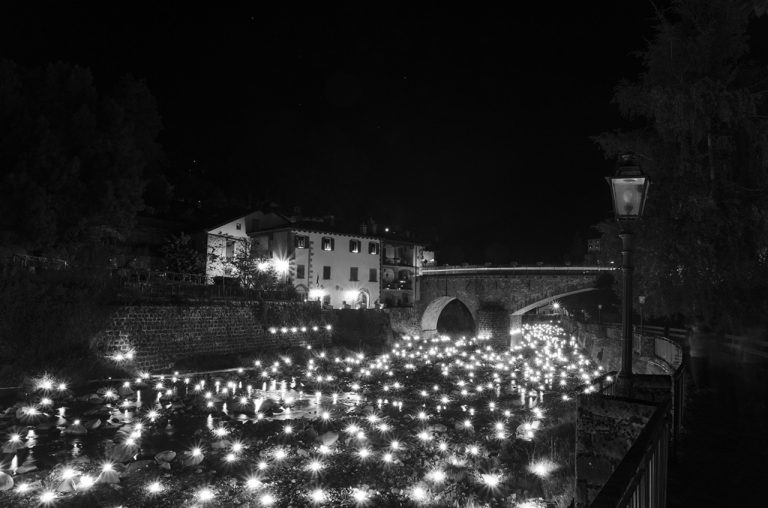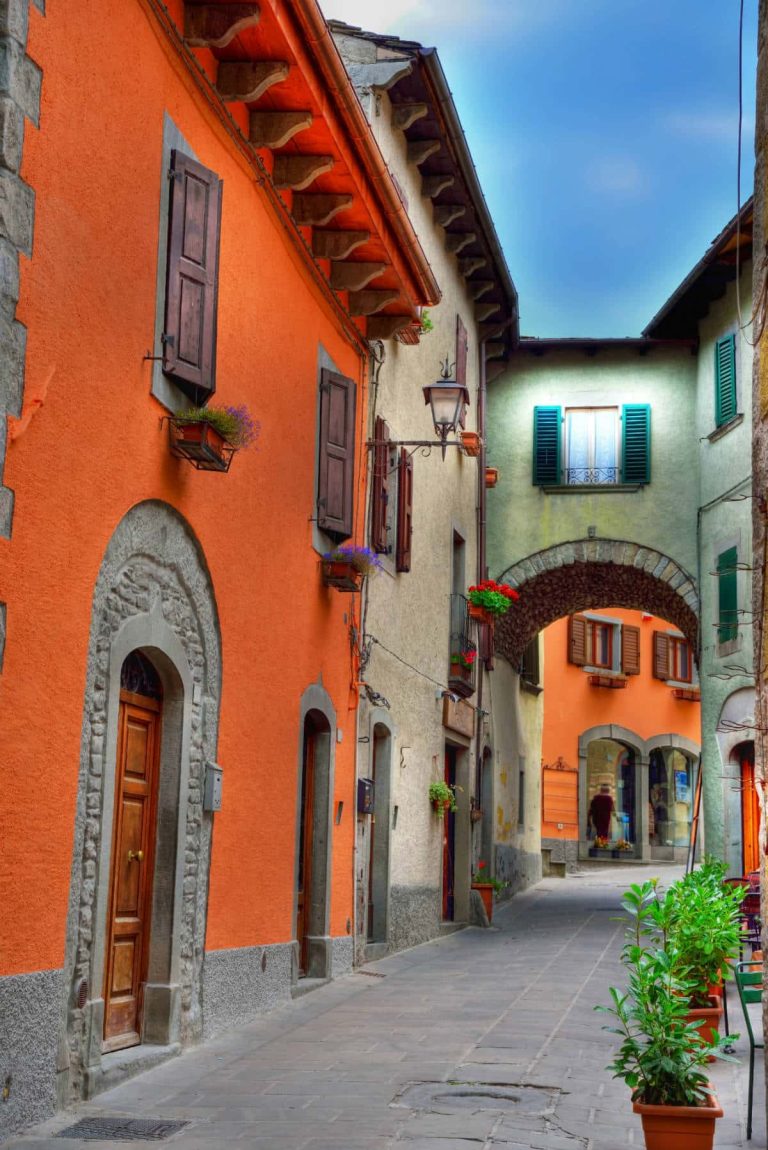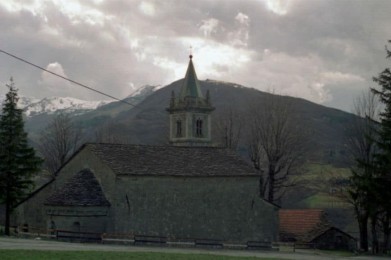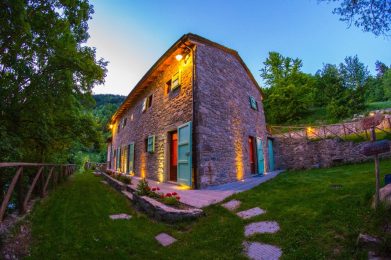A village with ancient origins
The name "Fiumalbo" is said to derive from the Latin Flumen Album, "white river," in reference to the clear, bubbling waters that surround it. Mentioned as early as 1038 in a deed in which Bonifacio di Canossa (Matilda's father) donated the fortress of Fiumalbo to the bishop of Modena, the village boasts nearly a thousand years of documented history, but its origins are lost in much earlier times, as evidenced by the mysterious Celtic huts in the Valdare and Doccia areas and the enigmatic Margolfe, apotropaic sculptures with female faces carved into the stone of houses.
Architecture and faith: an intact heritage
Strolling through its paved alleys and stone houses, one has the impression of passing through a suspended time. The historic center of Fiumalbo is a real treasure chest of artistic and religious treasures: The Church of St. Bartholomew the Apostle, built in 1120 and enlarged in 1592, preserves inside a wooden coffered ceiling, 16th-century paintings and valuable sculptures from the school of Wiligelmo; The Oratory of SS. Sacramento, attached to the mother church, was the seat of the local confraternity from 1593 and preserves valuable liturgical furnishings; The Oratory of San Rocco, dating from 1418 but rebuilt in the 16th century, shows Tuscan Renaissance influences and is decorated with frescoes attributed to Saccaccino Saccaccini da Carpi.
Opposite the parish church, the Church of the Immaculate Conception (1516) was called "dei Bianchi," while the nearby Church of St. Catherine of Siena, founded in 1579 and called "dei Rossi," now houses the Museum of Sacred Art, the only one of its kind in the Modena Apennines. Completing the religious heritage are the Oratory of Costolo, the Church of Saints Donnino and Francis, and the Oratory of St. Michael.
Nature, hiking and winter sports
Fiumalbo is a true paradise for mountain lovers in all seasons. In summer, it offers trails immersed in beech and chestnut forests, ideal for hiking, trekking, mountain biking and no-kill fishing. In winter, on the other hand, it turns into a perfect destination for snow sports, thanks to its proximity to the slopes of Val di Luce: ski mountaineering, snowshoeing, freeriding and even snowmobiling offer high-altitude fun for every taste and experience.
A language unto itself
A fascinating aspect of Fiumalbo is its unique dialect, which represents a transition point between Emilian and Tuscan, taking on characteristics similar to Veneto. This linguistic peculiarity reflects its nature as a border town, which has always been suspended between two cultural identities.
Culture and memory
Fiumalbo also preserves a historical memory related to emigration. In the early 20th century, many inhabitants left for the Americas in search of fortune. In the Dawson (New Mexico, 1913) mining accident, 17 of the 146 Italian victims were originally from Fiumalbo.
Events and traditions
Among the not-to-be-missed events is the patronal feast of St. Bartholomew, celebrated on August 23 and 24, with an evocative procession in historical costume that involves the entire community. The atmosphere during this event is deeply linked to the religious and historical identity of the village.
Fiumalbo is much more than a mountain resort: it is a place where history speaks through stone, where nature blends with art, and where traditions can still be breathed in the clear air of the Apennines. A must-see for those seeking authenticity, beauty and a true Italian experience of yesteryear.

